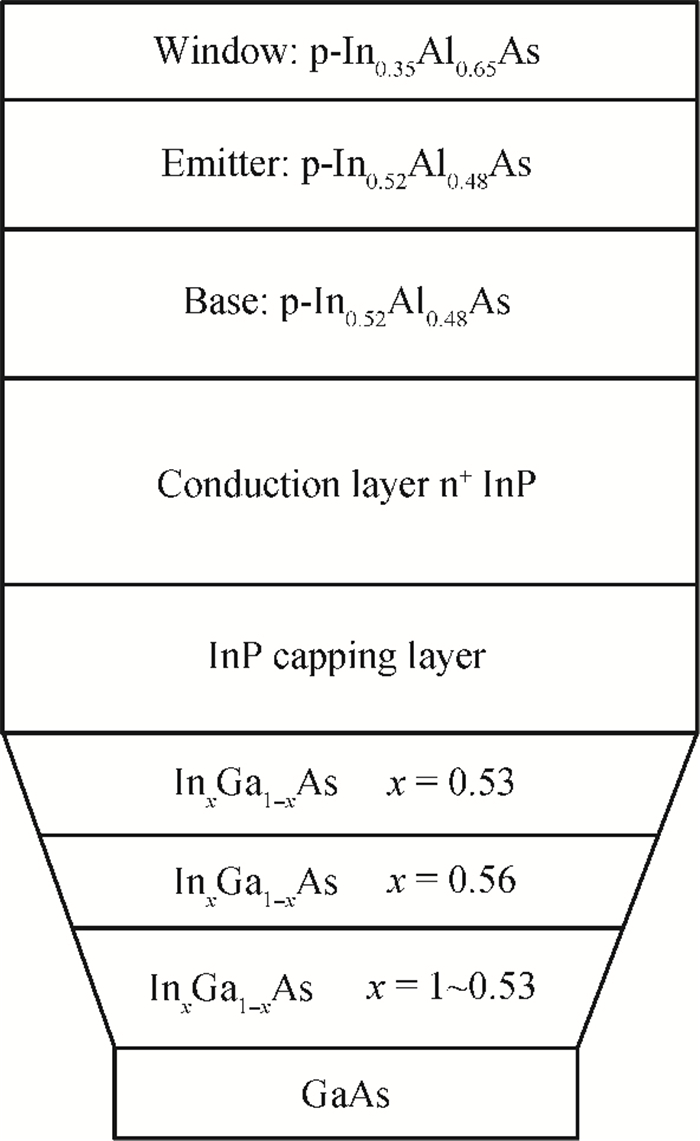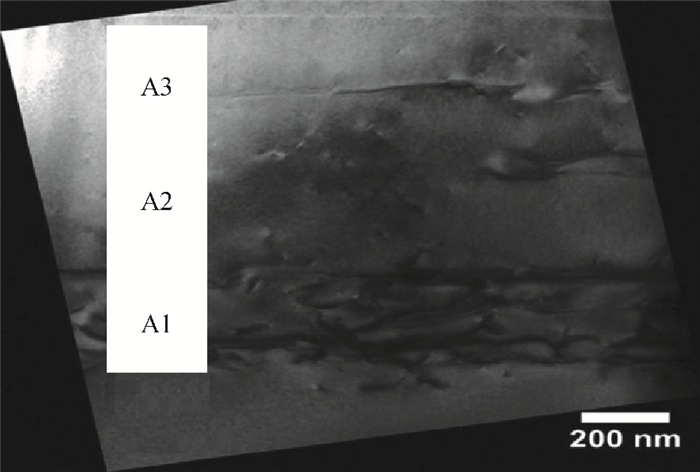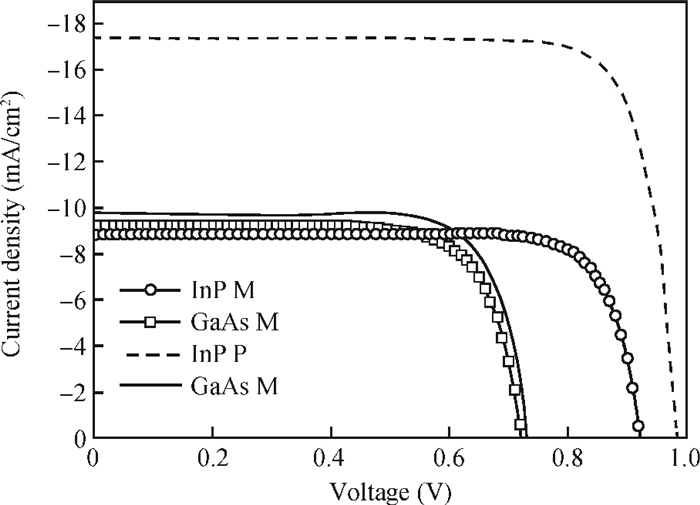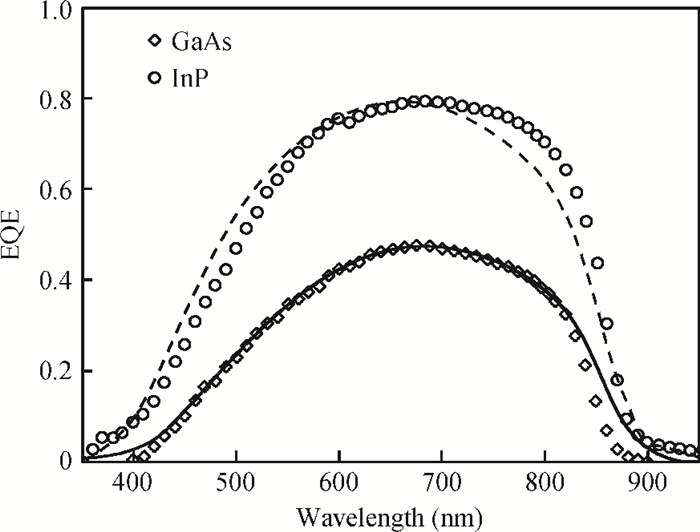| Citation: |
Xiaosheng Qu, Hongyin Bao, Hanieh. S. Nikjalal, Liling Xiong, Hongxin Zhen. An InGaAs graded buffer layer in solar cells[J]. Journal of Semiconductors, 2014, 35(1): 014011. doi: 10.1088/1674-4926/35/1/014011
****
X S Qu, H Y Bao, H. S. Nikjalal, L L Xiong, H X Zhen. An InGaAs graded buffer layer in solar cells[J]. J. Semicond., 2014, 35(1): 014011. doi: 10.1088/1674-4926/35/1/014011.
|
-
Abstract
This paper uses an InGaAs graded buffer layer to solve the problem of lattice mismatch and device performance degradation. In the graded buffer layer, we choose the "transition layer" and the "cover layer" to accommodate the 3.9% mismatch. No threading dislocations were observed in the uppermost part of the epitaxial layer stack when using a transmission electron microscope (TEM). We analyze the factors which influence the saturation current. Simulation data shows that the cells grown by metal organic vapor phase epitaxy (MOVPE) have considerable open circuit voltage, short circuit current, and photoelectric conversion efficiency. Finally we propose that InP may have great development potential as a substrate material. -
References
[1] Jiao G, Liu Z, Shi F, et al. Studying of linearly graded buffer layer effect on quality of InGaAs on GaAs substrate. Proc SPIE, 2012, 8419:84192Z doi: 10.1117/12.977611[2] Loke W K, Tan K H, Wicaksono S, et al. Effect of growth temperature on the epitaxy strain relaxation and the tilt of InxAl1-xAs graded layer grown by solid-source molecular beam epitaxy. J Phys D:Appl Phys, 2012, 45(50):505106 doi: 10.1088/0022-3727/45/50/505106[3] Sasaki T, Suzuki H, Inagaki M, et al. Real-time structural analysis of compositionally graded InGaAs/GaAs (001) layers. IEEE J Photovoltaics, 2012, 2(1):35 doi: 10.1109/JPHOTOV.2011.2174198[4] Schulte K L, Garrod T J, Kim T W, et al. Metalorganic vapor phase growth of quantum well structures on thick metamorphic buffer layers grown by hydride vapor phase epitaxy. J Cryst Growth, 2013, 370:293 doi: 10.1016/j.jcrysgro.2012.08.053[5] France R M, Geisz J F, Steiner M A, et al. Reduction of crosshatch roughness and threading dislocation density in metamorphic GaInP buffers and GaInAs solar cells. J Appl Phys, 2012, 111(10):103528 doi: 10.1063/1.4721367[6] Galiev G B, Vasil'evskii I S, Pushkarev S S, et al. Metamorphic InAlAs/InGaAs/InAlAs/GaAs HEMT heterostructures containing strained superlattices and inverse steps in the metamorphic buffer. J Cryst Growth, 2013, 366:55 doi: 10.1016/j.jcrysgro.2012.12.017[7] Landgraf B, Slobodskyy T, Heyn C, et al. Strain relaxation in metamorphic InAlAs buffers. Mater Sci Eng B, 2012, 177:762 doi: 10.1016/j.mseb.2012.03.027[8] Tomasulo S, Yaung K N, Lee M L. Metamorphic GaAsP and InGaP solar cells on GaAs. IEEE J Photovoltaics, 2012, 2(1):56 doi: 10.1109/JPHOTOV.2011.2177640[9] Fetzer C M, King R R, Colter P C, et al. High-efficiency metamorphic GaInP/GaInAs/Ge solar cells grown by MOVPE. J Cryst Growth, 2004, 261(2):341 https://asu.pure.elsevier.com/en/publications/high-efficiency-metamorphic-gainpgainasge-solar-cells-grown-by-mo[10] King R R, Fetzer C M, Colter P C, et al. Lattice-matched and metamorphic GaInP/GaInAs/Ge concentrator solar cells. Proceedings of 3rd IEEE World Conference on Photovoltaic Energy Conversion, 2003, 1:622[11] Dimroth F. High-efficiency solar cells from Ⅲ-Ⅴ compound semiconductors. Physica Status Solidi C, 2006, 3(3):373 doi: 10.1002/(ISSN)1610-1642[12] Andre C L, Wilt D M, Pitera A J, et al. Impact of dislocation densities on n/p and p/n junction GaAs diodes and solar cells on SiGe virtual substrates. J Appl Phys, 2005, 98:014502 doi: 10.1063/1.1946194[13] Zakaria A, King R R, Jackson M, et al. Comparison of arsenide and phosphide based graded buffer layers used in inverted metamorphic solar cells. J Appl Phys, 2012, 112(2):024907 doi: 10.1063/1.4737788[14] Ebert C W, Reynolds C L, Wellenius P, et al. Optimization of InGaAs metamorphic buffers for triple junction solar cells. 37th IEEE Photovoltaic Specialists Conference (PVSC), 2011:000469[15] King R R, Law D C, Edmondson K M, et al. 40% efficient metamorphic GaInP/GaInAs/Ge multijunction solar cells. Appl Phys Lett, 2007, 90:183516 doi: 10.1063/1.2734507[16] Cheknane A, Benouaz T. Prediction model for the diffusion length in silicon-based solar cells. Journal of Semiconductors, 2009, 30(7):072001 doi: 10.1088/1674-4926/30/7/072001 -
Proportional views





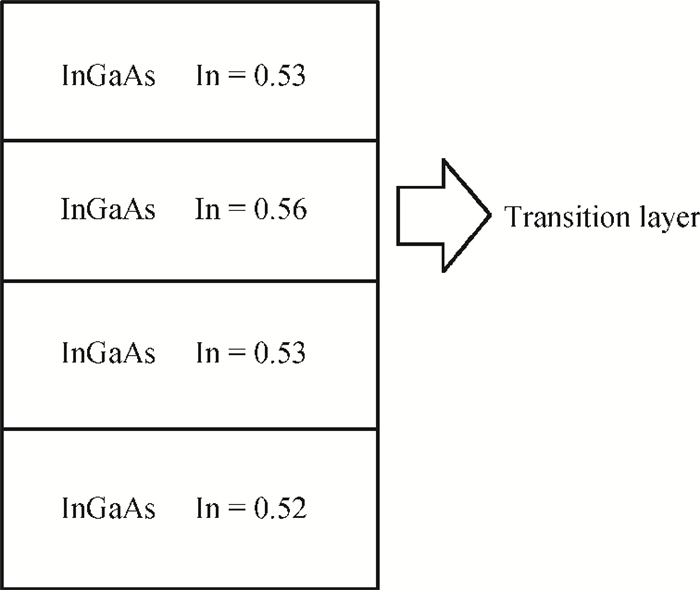
 DownLoad:
DownLoad:
